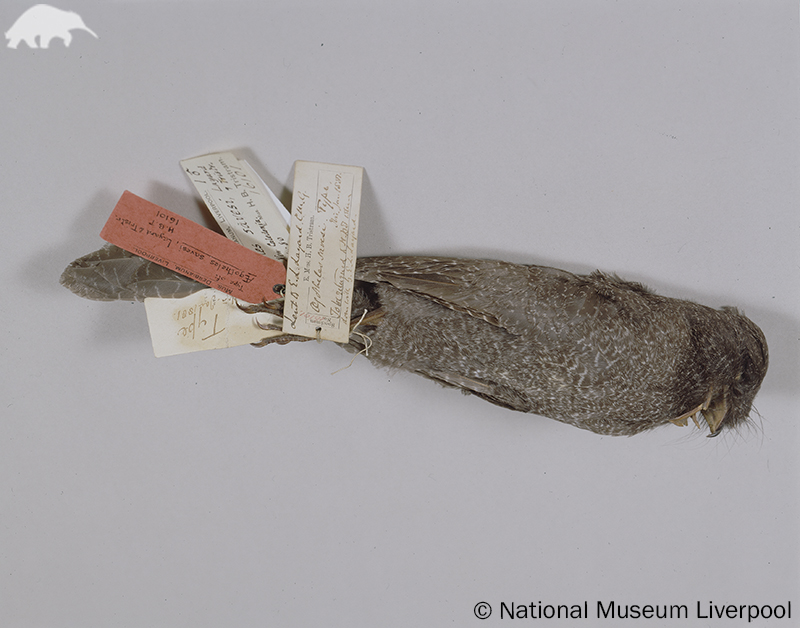About
This mysterious species, which has not been since 1998, continues to elude birdwatchers and researchers.
It is known only one sighting, three reports, and from two specimens, which are held in museums in Liverpool and Italy. The bird is endemic to the island of New Caledonia, which is in the South Pacific Ocean to the east of Australia. Compared to other owlet-nightjars, this species is larger and has longer legs, hinting at a more ground-dwelling existence. The bird has been classified as critically endangered as its population is unlikely to number more than 50 individuals. They have been placed at the base of their family’s phylogeny, suggesting that it was one of the first to diverge from other members of the genus, evolving in isolation on the island of New Caledonia. More research on the species’ ecological habits and range needs to be undertaken to inform conservation action.
- Order: Caprimulgiformes
- Family: Aegothelidae
- Population: <50
- Trend: decreasing
- Size: 28cm
EDGE Score
Distribution
Endemic to the island of New Caledonia, in the South Pacific Ocean to the east of Australia.
Habitat and Ecology
This species’ have been sighted in humid forest, and areas dominated by Melaleuca plants. Very little is known about this enigmatic species, but it has been seen foraging for insects at dusk, and can be presumed that it is territorial and employs a sit and wait tactic to prey on small animals. Its large size and long legs suggest it is ground dwelling.
